Schlumbergera Truncata Thanksgiving Cactus
From: £5.00
Schlumbergera is a stunning and unique plant that is perfect for adding a pop of colour to any space. Also known as the Thanksgiving Cactus close cousin of the Christmas and Easter Catus. This plant is a member of the cactus family and is native to the rainforests of Brazil.
The Schlumbergera is a low-maintenance and pet-friendly plant that features flat, segmented leaves that grow in a cascading fashion, with colourful and showy blooms emerging from the tips of each segment. Typically flowers appear in the winter months but sometimes plants bloom almost all year around.
This plant thrives in bright light and prefers well-draining soil. It is easy to care for, as it requires minimal watering and can tolerate a range of temperatures.
Please note plants are in different stages of blooming, some have flowers, some are already flowered and others getting ready to bloom.
Schlumbergera truncata (Thanksgiving Cactus) Care Guide
The Schlumbergera truncata, commonly known as the Thanksgiving Cactus, is a popular houseplant that adds vibrant colour to your indoor space, especially around the holiday season. Although often confused with its close relatives, the Christmas Cactus (Schlumbergera x buckleyi) and Easter Cactus (Rhipsalidopsis gaertneri), the Thanksgiving Cactus has distinct, pointed leaf segments and blooms earlier in the season.
Here’s a comprehensive care guide to help you keep your Thanksgiving Cactus thriving, with tips on how to encourage blooming and troubleshooting common issues.
Light Requirements:
- Bright, Indirect Light: Place your Thanksgiving Cactus in bright, indirect light to promote healthy growth and flowering. Too much direct sunlight can cause the leaf segments to turn reddish or even scorch. This plant can also tolerate low light, but it may not bloom as profusely in these conditions.
Watering Needs:
- Moderate Watering: Water your Thanksgiving Cactus when the top 2-3 cm of soil feels dry. Overwatering can lead to root rot, while underwatering may cause the leaves to shrivel. Ensure your pot has good drainage to prevent water from sitting in the bottom.
Humidity and Temperature:
- Moderate Humidity: Thanksgiving Cacti prefer a moderately humid environment, similar to their native tropical habitats. If the air in your home is dry, especially in winter, consider placing a humidity tray under the plant or using a room humidifier.
- Ideal Temperature: This plant thrives in temperatures between 18°C and 24°C. To encourage blooming, expose the plant to cooler temperatures (around 15°C) for about six weeks in autumn.
Best Soil Type:
- Well-Draining Potting Mix: Use a cactus or succulent potting mix, which offers good drainage.
Fertilising Schedule:
- Monthly Feeding: Feed your Thanksgiving Cactus with a balanced, water-soluble fertiliser every month during the growing season (spring through early autumn). Stop feeding in late autumn and winter, as the plant naturally enters a resting phase.
Encouraging Blooms:
To force your Thanksgiving Cactus to bloom, follow these steps:
- Cool Temperatures: Place the plant in a location with temperatures between 12°C and 15°C for six to eight weeks in the autumn. The cooler temperature mimics the natural conditions the plant experiences in its native habitat, which triggers the blooming cycle.
- Darkness: Ensure the plant gets 12-14 hours of darkness each day during this period. You can cover the plant with a box or place it in a dark room at night. The combination of cool temperatures and extended periods of darkness encourages the formation of flower buds.
- Resume Normal Care: Once buds appear, return the plant to its usual location with bright, indirect light and resume normal watering and care. Avoid moving the plant too much, as this can cause the buds to drop.
Troubleshooting Common Issues:
1. Bud Drop:
- Symptoms: Flower buds drop off before blooming.
- Causes: Sudden changes in the environment, such as temperature fluctuations or moving the plant, can cause stress and lead to bud drop.
- Solution: Keep the plant in a stable environment and avoid moving it once buds have formed. Ensure consistent watering and light exposure.
2. Limp or Shriveled Leaves:
- Symptoms: Leaves appear limp or shrivelled.
- Causes: This is usually a sign of underwatering or very low humidity.
- Solution: Increase watering slightly, ensuring the soil is consistently moist but not waterlogged. Raise humidity levels if the air is dry.
3. Root Rot:
- Symptoms: The plant appears wilted despite regular watering, and the roots may be black or mushy.
- Causes: Overwatering or poor drainage can lead to root rot.
- Solution: Remove the plant from its pot, trim off any rotted roots, and repot it in fresh, well-draining soil. Adjust your watering routine to allow the soil to dry out between waterings.
4. Red or Purple Tint on Leaves:
- Symptoms: The leaf segments develop a reddish or purplish tint.
- Causes: Excessive direct sunlight or exposure to cold drafts.
- Solution: Move the plant to a location with bright, indirect light and away from cold drafts or intense sun.
5. Failure to Bloom:
- Symptoms: The plant does not produce flowers.
- Causes: Lack of sufficient darkness, cool temperatures, or inconsistent care during the pre-blooming period.
- Solution: Follow the steps for encouraging blooms, ensuring the plant gets the right conditions during autumn.
Pet Safety:
- Non-Toxic: Thanksgiving Cactus is non-toxic to pets and humans, making it a safe choice for households with animals or children.
**Q: How often should I water my Thanksgiving Cactus and what are the signs of overwatering?**
A: Water your cactus when the top 2-3 cm of soil feels dry, typically once every week or two, depending on indoor conditions. Signs of overwatering include limp, discoloured leaves or a musty smell from the soil, indicating potential root rot.
**Q: Can the Thanksgiving Cactus be placed in a bathroom, and how does humidity affect it?**
A: Yes, your cactus can thrive in a bathroom if it receives bright, indirect light. It prefers moderate humidity, which helps prevent the leaves from becoming shrivelled. If your bathroom is particularly steamy, ensure good airflow to prevent excessive moisture accumulation.
**Q: What should I do if my Thanksgiving Cactus doesn’t bloom?**
A: Ensure the plant experiences cooler temperatures (12°C-15°C) and 12-14 hours of darkness daily for about 6-8 weeks in autumn. If conditions are right and it still doesn’t bloom, check that it isn’t being moved too frequently and that its feeding schedule is appropriate, pausing fertilisation in late autumn and winter.
🌟 Schlumbergera Truncata Thanksgiving Cactus Care Guide 🌟
Welcome to your quick and cheerful guide to caring for your vibrant Thanksgiving Cactus, a splendid addition to any indoor garden!
☀️ Light
☀️☀️▫️ (Medium)
Place your Thanksgiving Cactus in a spot with bright, indirect light. Direct sunlight might be too harsh, causing the leaves to redden or burn, while low light could reduce blooming.
💧 Water
💧💧▫️ (Medium)
Water when the top 2-3 cm of soil feels dry to the touch. Be cautious of overwatering as it could lead to root rot. Ensure the plant’s pot has excellent drainage.
🌡️ Temperature
🌡️🌡️▫️ (Average)
These cacti prefer a cosy indoor setting with temperatures between 18°C and 24°C. For a burst of blooms, expose the plant to cooler temperatures around 15°C for several weeks during autumn.
💦 Humidity
💦💦▫️ (Moderate)
Mimic the humid rainforests of Brazil by maintaining moderate humidity around your cactus. Consider using a humidity tray or a room humidifier during drier months.
🌿 Repotting
Repot your Thanksgiving Cactus every 2-3 years or when it outgrows its pot. Use a well-draining potting mix, ideally formulated for cacti and succulents, to provide the best home for your plant’s roots.
🐾 Pet Friendliness
Good news for pet owners! The Thanksgiving Cactus is non-toxic to both cats and dogs, making it a worry-free choice for households with furry friends.
🏡 Recommended Locations at Home
This cactus thrives on shelves or in hanging baskets where it can drape beautifully. Avoid placing it near cold drafts or excessively hot radiators.
🌬️ Air Purifying
While not the most potent air purifier, the Thanksgiving Cactus can contribute to a slight improvement in your indoor air quality, adding to its charm.
✨ Other Plant Features
Enjoy a delightful display of flowers, typically around the festive season, adding a splash of colour when most other plants may be dormant. Choose from a variety of flower colours to suit your decor or mood!
🤖 Mossbot Assistance and More
Got more questions? Ask our Mossbot for advice anytime! Alternatively, you can reach out to us via our website for more guidance. Remember, we also offer a free plant hospital service if your cactus feels under the weather.
Nurture your Thanksgiving Cactus with love, and it will surely bring a touch of Brazilian beauty to your home! 🌵🌸

Free Care Guide With Every Purchase
Scan the plant pot QR for instant access to our care guide for your plant. No hassle, no stress, just healthy and happy plants.
Verified reviews from our customers
| 5 star | 96% | |
| 4 star | 3% | |
| 3 star | 1% | |
| 2 star | 0% | |
| 1 star | 0% |



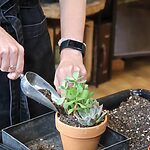
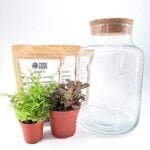

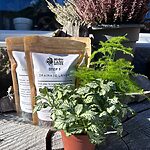





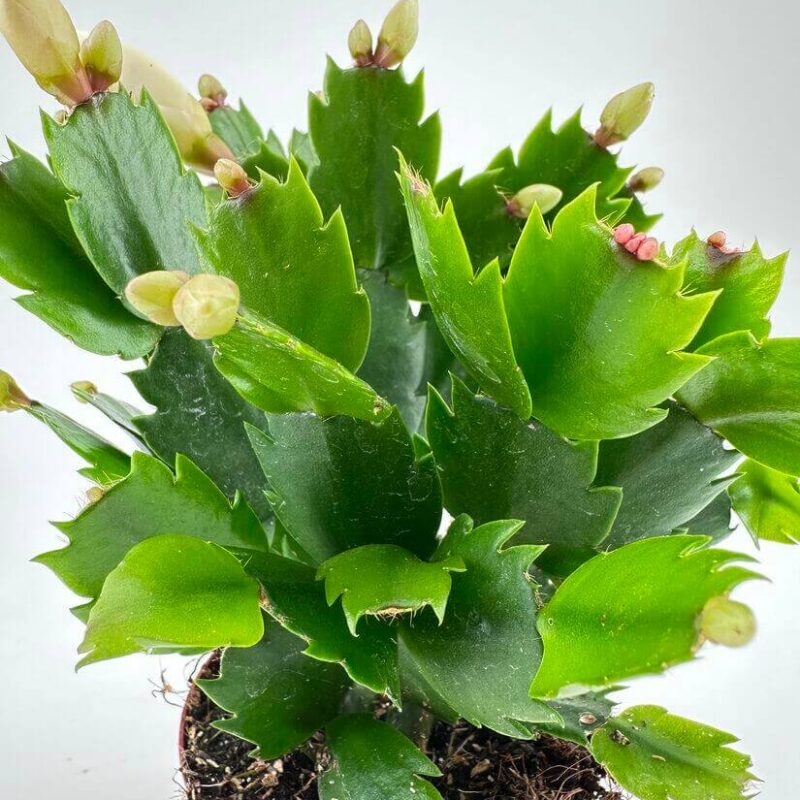



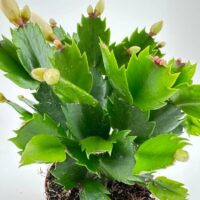

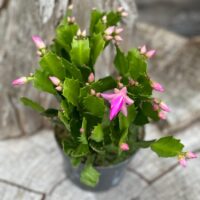

Amazing, personalised customer service! Always very friendly, approachable and dedicated. Thank you!
Items were as described, delivered promptly and very well packaged. Would order from this company again.
First time buyer from here. Prompt delivery Postage is a bit steep for what was a small order but overall satisfied and will buy from here again
I love working with the soils,plants and mosses from Highland Moss Co. The quality is exceptional and stunningly beautiful. Highly recommended.